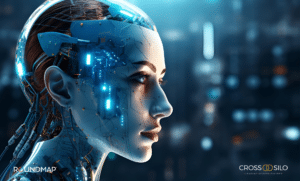Recently, we had the opportunity to advise a social enterprise, and the experience was so enlightening that we felt compelled to share it, keeping names and specifics confidential for privacy.
The entrepreneur at the helm shared his innovative vision: to harness the unique abilities of individuals with a specific disorder by engaging them in projects where those traits could provide distinct advantages. Despite crafting a thorough business plan, conducting a pilot project, and engaging with potential investors, he found himself at a standstill with limited success in securing the necessary capital.
He was ensnared by the classic chicken-and-egg dilemma faced by many startups: investors seek evidence of a venture’s viability, feasibility, and scalability, yet demonstrating these qualities often requires the very funding they’re hesitant to provide. “What’s the next step?” he pondered, looking for a way to break this vicious cycle.
The All-Important Question
We asked, “What does success look like to you?”
The founder’s response was understated yet poignant: securing even a single project would enable him to employ individuals, offering them not just employment but a profound sense of purpose. His humility was evident, yet it masked a deeper issue: a noticeable lack of confidence and clarity in his vision. It seemed he was struggling to grasp and assert the potential impact of his enterprise on the future, whatever shape that future might take.
Investors are on the lookout for a dynamic leader, one who stands at the helm of a diverse team, armed with a vision that’s both bold and grounded in reality. What truly captures their attention is a leader with a strategic, well-defined plan ready to be implemented. Your ambition should be palpable yet tethered to pragmatism. Exude confidence without tipping into arrogance.
Therefore, “you have to be bold,” we explained, “and present your business concept with confidence while providing tangible goals and benefits”, something like this:
- In X amount of time,
- We will serve X amount of customers per year,
- Doing X amount of projects per year,
- Making X amount of revenue per year,
- Employing X number of disordered people per year,
- Thereby creating X amount of customer value per year,
- And realizing X amount of social impact per year.
There is no guarantee for success; however, understanding the investors’ job to be done increases the odds of receiving the much-needed startup funding. Work on three scenarios, allowing investors to consider different levels of risk:
- Pessimistic
- Realistic
- Optimistic
Start with 5-year planning, then work backward to 2 years, 1 year, and 6 months. A simple Excel sheet will do the job. Investors need to be able to calculate the risk involved by assessing how much of the projected market is obtainable and serviceable given the design of the operation (= feasibility) and how long it will take for the firm to operate at a profit (= viability).
Perceive the business venture from these angles:
- Feasibility – Do we have the right capabilities?
- Viability – Can we do it profitably?
- Desirability – Are we truly passionate about it?
- Scalability – Is there room for growth and optimization?
The Business Case
So, what are the chances of this particular business case? The founder explained that according to research, in general, 3% of the population is diagnosed with this disorder, of which more than 80% are unemployed.
We asked: “How many of these unemployed potentials would you like to employ?” He suggested that 5% in five years would be a great result. So, we filled in the numbers:
- Current population: 17 million (The Netherlands),
- Number of disordered people: 510.000 (3%),
- Number of disordered people that are currently unemployed: 408.000 (80%),
- Number of disordered people that could be employed: 20.400 (5%),
- Yearly cost-savings to society: 250 – 500 million euros per year (in social security savings).
Instead of pitching from a series of unspecified goals ─ to get money, do some projects, and provide meaning to unemployed potential ─ the business idea now shows huge potential with incredible social impact.
The Empathic Pathway
Taking a different perspective ─ in this case, the perspective of who’s to benefit most in tangible terms, i.e., local governments ─ is all it took to help steer this project in the right direction.
We asked the founder to work on three scenarios describing the organization’s future in five years:
- In terms of the numbers (#projects, #employees, #clients, and so on),
- How candidates are being attracted, selected, trained, and managed;
- How the projects are being organized;
- What a typical workplace will look like;
- How progress is being measured;
- How clients are being acquired, informed, and retained;
- What the future organization structure will look like;
- What systems are in place; and so on.
The New Pitch
His new pitch now starts with: “We would like to discuss how [stakeholder] and [firm] can collaborate in saving local communities 250-500 million Euros in total, each year; by providing greater meaning to 20.000 disordered people that are currently unemployed while generating at least the same amount of money as customer value.“
Key Takeaway
To truly captivate and engage others in your mission you must deeply comprehend the needs and tasks of your stakeholders. Masterfully articulate and demonstrate your initiative’s value to them, transitioning from viewing the world through your lens to embracing theirs. This shift in perspective is not just strategic; it’s transformative, paving the way for genuine engagement and collective success.
Author
-
Edwin Korver is a polymath celebrated for his mastery of systems thinking and integral philosophy, particularly in intricate business transformations. His company, CROSS/SILO, embodies his unwavering belief in the interdependence of stakeholders and the pivotal role of value creation in fostering growth, complemented by the power of storytelling to convey that value. Edwin pioneered the RoundMap®, an all-encompassing business framework. He envisions a future where business harmonizes profit with compassion, common sense, and EQuitability, a vision he explores further in his forthcoming book, "Leading from the Whole."
View all posts Creator of RoundMap® | CEO, CROSS-SILO.COM





